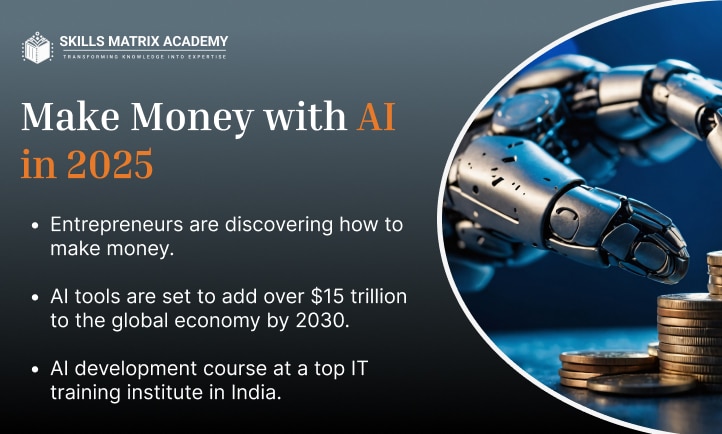What is Data Science?
Data science is the field that uses scientific methods, processes, algorithms, and systems to extract knowledge and insights from structured and unstructured data. It combines disciplines such as statistics, machine learning, data analysis, and data visualization. By applying these techniques, data scientists uncover hidden patterns, trends, and correlations that help businesses make smarter decisions.
At its core, data science turns raw information into actionable insights. It helps predict outcomes, understand user behavior, and optimize products or services. The field is growing rapidly as more industries adopt data-driven strategies.
Key Tools Used in Data Science

Data science relies on a mix of essential tools:
- Programming languages: Python, R, SQL
- Machine learning libraries: TensorFlow, Keras, Scikit-learn
- Data visualization tools: Tableau, Power BI, Matplotlib
- Databases and cloud platforms: MySQL, MongoDB, PostgreSQL, AWS, Azure, Google Cloud Platform
These tools help data scientists analyze datasets, build algorithms, and extract insights efficiently.
What Does a Data Scientist Do?
A data scientist identifies the right questions and finds answers using data. They develop predictive models to forecast trends and outcomes.
Daily tasks often include:
- Finding patterns and trends in datasets
- Building algorithms and data models
- Applying machine learning techniques to improve data quality and product offerings
- Communicating recommendations to teams and senior staff
- Using data tools like Python, R, SAS, or SQL
- Staying updated on innovations and new technologies
Thanks to this work, a career in data science is intellectually challenging, analytically satisfying, and keeps professionals at the forefront of emerging technologies.
Step-by-Step Data Science Roadmap (2025)

The data science roadmap 2025 provides a clear path for beginners and aspiring professionals. Following this structured roadmap helps you master math foundations, programming, machine learning, and deployment, while building hands-on projects for a rewarding data science career. If you’re looking to accelerate your learning, joining a reputable IT training institute in India or the best coding institute in Jaipur can provide guidance, mentorship, and real-world exposure.
Step 1: Build Your Math and Statistics Foundations
A solid grasp of math foundations and statistics foundations is essential for data science. You don’t need advanced expertise initially, but understanding core concepts is necessary for algorithms, predictive models, and data analysis.
Mathematics for Data Science
Focus on:
- Linear Algebra: Learn vectors, matrices, and operations used in PCA.
- Calculus: Derivatives and gradients for gradient descent.
- Probability: Covers conditional probability, Bayes’ theorem, and distributions.
- Optimization Basics: Understand cost functions and error minimization.
Suggested timeline: 2–3 weeks of focused practice.
Statistics for Data Science
Statistics help interpret datasets and make decisions. Learn:
- Descriptive & Inferential Statistics: Mean, variance, confidence intervals.
- Hypothesis Testing & A/B Testing: Validate assumptions.
- Regression Analysis: Linear regression and logistic regression.
- Time Series Forecasting: Predict trends and outcomes.
Suggested timeline: 3–4 weeks, ideally with small practice projects.
Step 2: Learn Programming for Data Science
Once your math foundations are ready, start programming. Coding lets you clean data, build models, and apply theory to real-world datasets.
Best Programming Languages
- ython: Beginner-friendly, with libraries for data analysis, visualization, and machine learning.
- R: Ideal for statistical modeling and data visualization, commonly used in research applications..
Python is the preferred choice for beginners due to industry demand.
Key Libraries
- NumPy: Numerical operations and matrix handling.
- Pandas: Data cleaning and manipulation.
- Matplotlib & Seaborn: Visualizations for patterns and trends.
Essential Tools
- SQL: Query and aggregate structured data.
- Git & GitHub: Track changes and showcase projects.
- Data Structures & Algorithms (DSA): Important for ML and data science interviews.
Suggested timeline: 4–6 weeks to cover programming, libraries, SQL, and Git basics. Joining the best coding institute in Jaipur can help you learn these efficiently with mentorship and projects.
Step 3: Learn Data Handling & Exploratory Data Analysis
Once coding is solid, focus on data handling and EDA. Most real projects involve cleaning, organizing, and exploring datasets before modeling.
Data Cleaning Techniques
- Handle missing values by dropping or imputing.
- Remove duplicates and fix inconsistent entries.
- Format data types, like dates, strings, or categories.
Exploratory Data Analysis (EDA)
- Detecting outliers: spot unusual values.
- Check feature distribution: understand data spread.
- Perform correlation analysis: relationships between features.
Use Pandas for quick exploration and Seaborn for visualizations.
Visualization & BI Tools
Learn Tableau or Power BI to create dashboards and share insights with non-technical stakeholders.
Suggested timeline: 3–4 weeks with 2–3 datasets.
Step 4: Learn Core Machine Learning Concepts
Machine learning (ML) is the heart of data science. ML helps systems learn patterns and make predictions from datasets.
Types of Machine Learning
- Supervised Learning: Train models on labeled data. Example: predicting house prices.
- Unsupervised Learning: Find hidden patterns in unlabeled data. Example: customer segmentation.
- Reinforcement Learning: Learn from rewards and penalties. Example: game-playing bots.
Core ML Algorithms
- Linear Regression & Logistic Regression: For prediction and classification.
- Decision Trees & Random Forests: Widely used in business applications.
- KNN: Simple and effective for classification.
- SVM: Handles high-dimensional data efficiently.
Model Evaluation Metrics
- Accuracy, Precision, Recall, and F1-Score for classification.
- RMSE/MAE for regression.
- Confusion Matrix & ROC-AUC for detailed performance evaluation.
Tools to Use
- Scikit-learn: Beginner-friendly for ML models.
- XGBoost: Advanced gradient boosting library.
Suggested timeline: 6–8 weeks before moving to deep learning and NLP.
Step 5: Explore Deep Learning & NLP
Deep learning and NLP power advanced AI applications.
Deep Learning Foundations
- Neural networks: Layers of interconnected nodes mimic the brain.
- CNN: Image classification and computer vision.
- RNN: Sequential data like time series or speech.
NLP Basics
- Tokenization: Split text into words or subwords.
- Word Embeddings: Vector representation (Word2Vec, GloVe).
- Transformers: Modern models like BERT and GPT.
Tools
- TensorFlow & PyTorch: Popular deep learning frameworks.
- Hugging Face: Pre-trained NLP models.
Suggested timeline: 6–8 weeks, depending on depth.
Step 6: Learn Deployment and MLOps Basics
Deploying models ensures users can access them reliably. MLOps maintains production stability.
Model Deployment
- Flask or FastAPI: Build APIs for ML models.
- Streamlit: Convert models into interactive web apps.
MLOps Essentials
- CI/CD: Automate testing and updates.
- Docker: Containerize models for consistent deployment.
- MLflow: Track experiments and manage models.
- Monitoring: Observe model performance to prevent drift.
Cloud Platforms
- Gain exposure to AWS, GCP, or Azure. Even simple deployments add portfolio value.
Suggested timeline: 3–4 weeks, focusing on one framework and cloud basics
Step 7: Work on Practical Projects
Practical projects strengthen skills and portfolio.
Project Ideas
- Beginner Projects: Predict Titanic survival, analyze sales data with EDA, and explore movie ratings trends.
- Intermediate: Loan prediction, customer churn analysis, sentiment analysis on tweets.
- Advanced: Image classification with CNN, chatbot with NLP, and stock price forecasting.
Best Practices
- Use Kaggle or UCI datasets.
- Document process in README files.
- Upload projects to GitHub with a clear structure.
- Ensure clarity and reproducibility for recruiters.
Aim for 3–5 solid projects across skill levels.
Step 8: Build Your Portfolio & Resume
A strong portfolio shows your skills.
- Host projects on GitHub with pinned repos.
- Write blogs on Medium or Hashnode explaining projects.
- Create a personal website or showcase projects on LinkedIn.
Joining a reputed IT training institute in India or the best coding institute in Jaipur can guide you in creating a standout portfolio. Well-documented projects often weigh more than degrees during hiring.
Career Scope of Data Science
The career scope of data science is highly promising. Businesses across the globe are generating massive amounts of data. This creates a high demand for professionals skilled in data analysis, machine learning, and statistics.
Data scientists are essential for interpreting structured and unstructured data, uncovering trends, and providing actionable insights. Industries like healthcare, finance, and technology rely on data-driven decisions, creating opportunities for skilled professionals.
As the volume of data grows, the need for data scientists is expected to increase. From hospitals predicting patient outcomes to banks analyzing credit risks, data science is everywhere.
Why Pursue a Career in Data Science?
A career in data science is both challenging and rewarding. It allows you to work with real-world datasets and solve complex problems. You’ll develop skills in data analysis, predictive modeling, and visualization, making you valuable to employers.
Additionally, data scientists enjoy competitive salaries and rapid career growth. The field encourages constant learning, with innovations in machine learning, AI, and big data analytics shaping new opportunities.
If you want structured guidance, enrolling in a recognized program or an IT training institute in India can provide mentorship, practical exposure, and hands-on experience.
Best Data Science Courses to Boost Your Career

Choosing the best data science courses ensures a strong foundation and industry-ready skills. Here are three popular programs:
-
Data Scientist Master’s Program
The Data Scientist Master’s Program by Simplilearn offers comprehensive data science training. The course covers:
- Data analysis techniques to extract insights from datasets.
- Machine learning concepts for predictive modeling.
- Data visualization using tools like Python and R.
- Programming in Python and R for real-world applications.
Participants work on real-world projects and case studies, which enhances practical understanding. This program is ideal for aspiring data scientists seeking advanced knowledge and industry readiness. It prepares students for roles in finance, healthcare, and technology industries.
-
Post Graduate Program in Data Science
The Post Graduate Program in Data Science, offered by Simplilearn in collaboration with Purdue University and IBM, is a rigorous bootcamp designed to accelerate careers.
Key highlights include:
- Core statistics and significant data analytics concepts.
- Hands-on learning with industry projects and labs.
- Training in machine learning, data visualization, and programming.
- Guidance from expert mentors with practical insights.
The curriculum emphasizes practical experience, helping participants tackle real-world data challenges. Graduates gain skills that make them highly competitive in the job market, ready to contribute to data-driven organizations.
-
Professional Certificate Course in Data Science
The Professional Certificate Course in Data Science, offered by Simplilearn in partnership with IIT Kanpur, delivers an in-depth education in data science principles.
Course features:
- Comprehensive coverage of data handling, machine learning, and statistical modeling.
- Programming with Python for real-world applications.
- Live virtual classes and practical assignments.
- Industry-relevant projects to gain hands-on experience.
This certification is suitable for professionals seeking to enhance data science skills and pursue advanced career opportunities. It equips learners to contribute effectively in finance, healthcare, and technology sectors.
Conclusion
The data science roadmap 2025 helps you progress from math foundations to deployment and portfolio building.
Master programming, data cleaning, EDA, ML algorithms, deep learning, NLP, deployment, and MLOps to become a proficient data scientist.
Practical projects and a strong portfolio make you industry-ready. Guided learning at a trusted IT training institute in India or the best coding institute in Jaipur can accelerate your journey. Following this roadmap equips you with analytical skills, predictive models, and the ability to uncover trends and outcomes, making your data science career rewarding and impactful.








